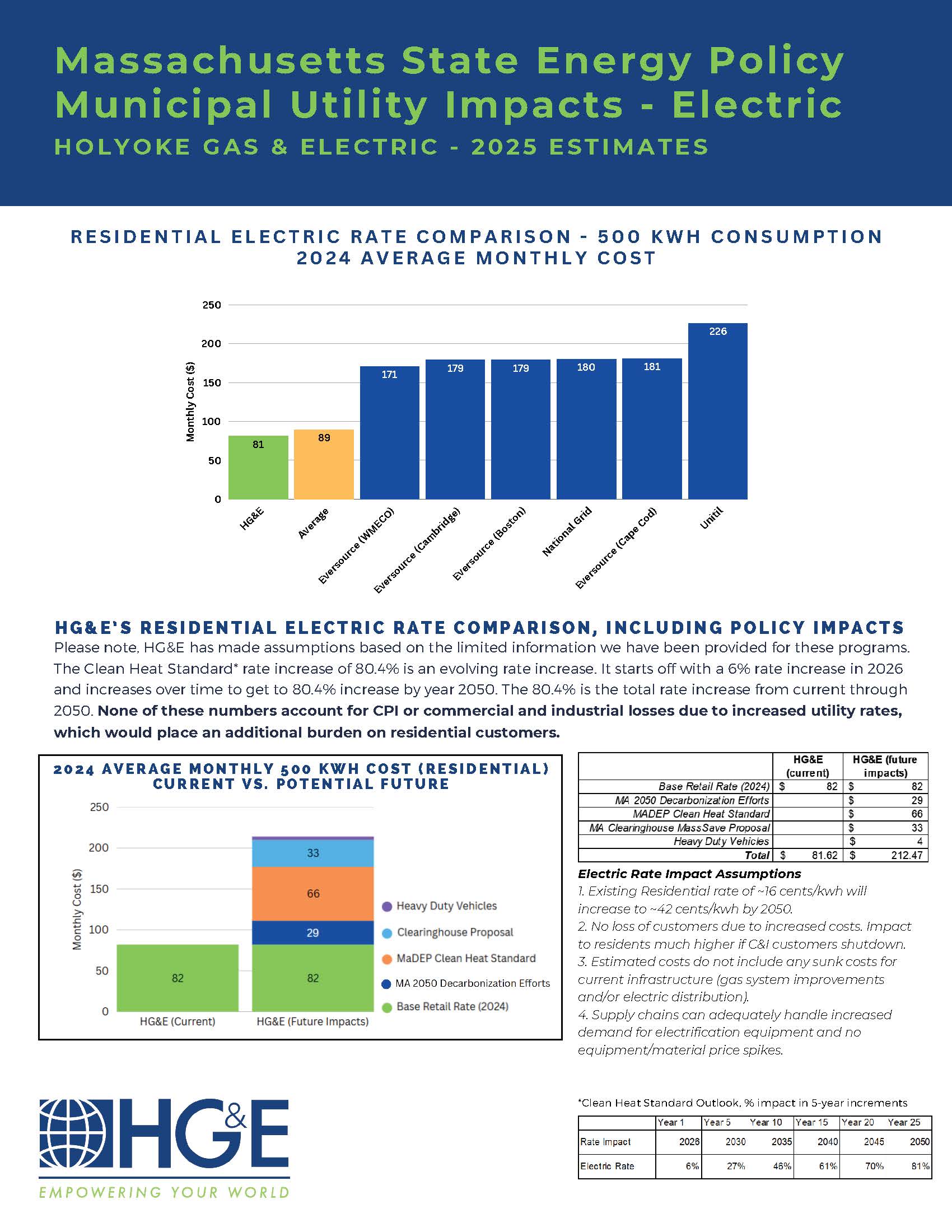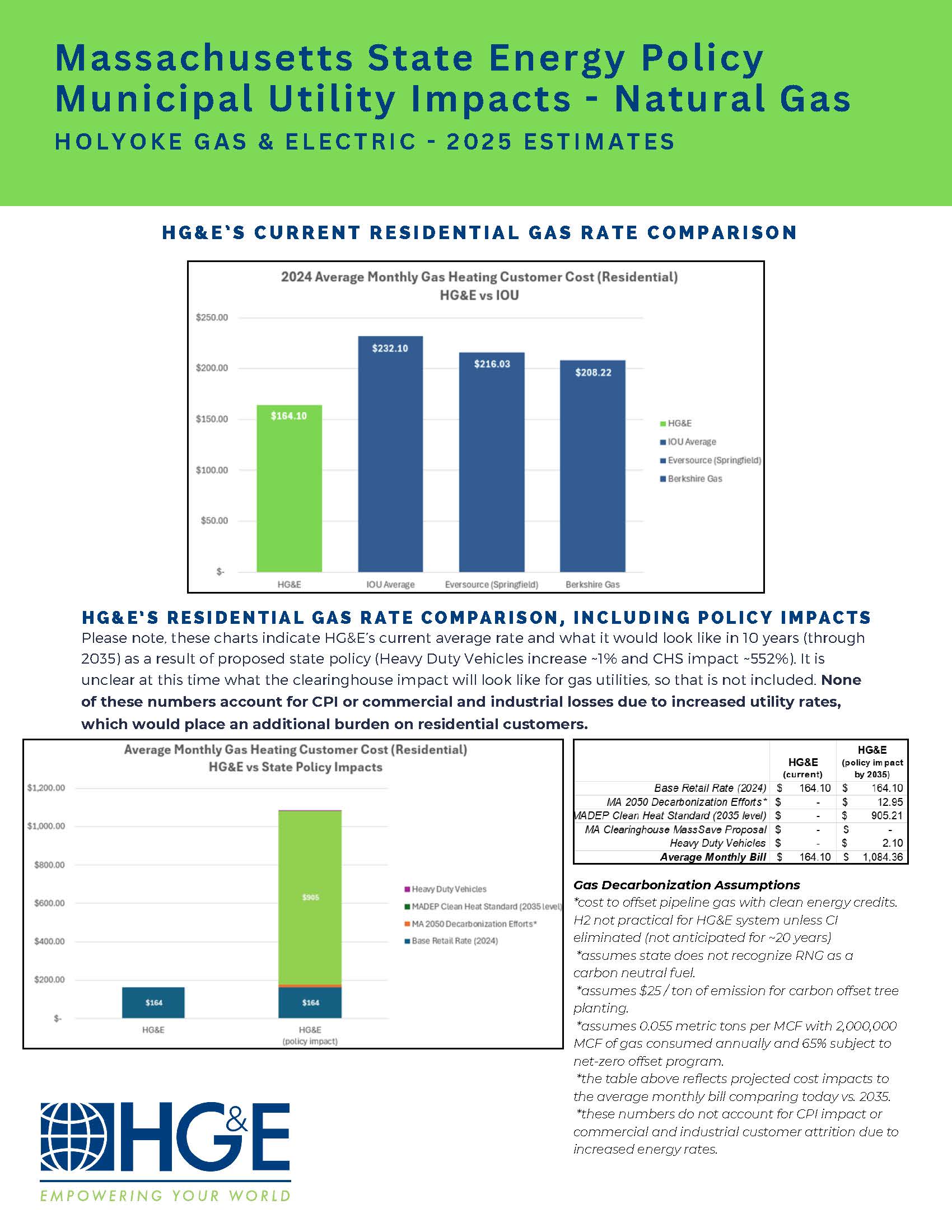May 01, 2025
HG&E, one of 41 Municipal Light Plants (MLPs) in Massachusetts, operates under local control to serve the unique needs of our customers. This structure allows HG&E to provide some of the lowest utility rates in the region while maintaining one of the cleanest electric portfolios in the Commonwealth. However, recent proposed state regulations threaten both affordable rates and local decision-making authority. While we share the State’s goal of reducing greenhouse gas (GHG) emissions, the draft regulations fail to acknowledge the significant impact MLPs have made in transforming local communities through their own initiative.
With our community's unique characteristics in mind, HG&E continues to make significant and strategic progress in reducing GHG emissions. HG&E’s pathway to net zero is multifaceted with a goal to expand carbon-free sources of electric generation in environmentally sensitive ways and to promote the reduction of energy use through energy efficiency and electrification programs, while maintaining some of the lowest electric rates in the Commonwealth of Massachusetts.
After providing feedback to various state regulators, we felt it was important to share the potential cost impact associated with one specific regulatory framework - MassDEP’s Clean Heat Standard (CHS). If MLP’s are required to comply, this regulation would have significant and lasting impacts on HG&E rates and set a precedent that would allow the state to treat MLPs like investor-owned utilities. This regulation would require utilities to meet annual targets for converting customers to electric heating options and there would be alternative compliance payments for those who fail to achieve these mandatory electric conversion quotas. This program will be extremely expensive for ratepayers throughout the state.
To understand the potential rate impact for customers, HG&E has made projections based on limited available information. Our analysis indicates the CHS regulation alone would increase HG&E's current residential electric rates by 80% by 2050 (current rate is $82/month; potential future rate is $148/month, for an average customer consuming 500 kWh/month). This would be an evolving impact, starting with a 6% rate increase in 2026 and escalating to 80% over time. Importantly, these projections do not account for impacts to natural gas costs or commercial and industrial losses due to increased utility rates, which could place an additional burden on residential customers.
HG&E is also concerned about other proposed state regulations that could negatively impact electric rates, including the Heavy Duty Omnibus regulation and Decarbonization Clearinghouse, as well as overall decarbonization efforts and capital investments required for future electrification. We will continue to keep customers informed as additional information becomes available.
Please see additional detail below.




